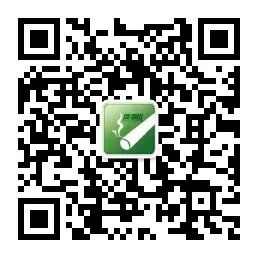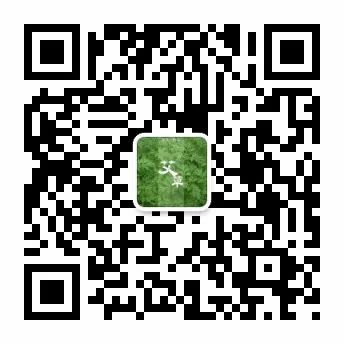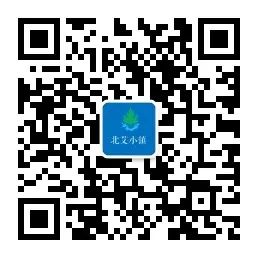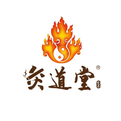Source: This article is excerpted from “Jiu Sheng”, Author/Zhou Meisheng, published by Qingdao Publishing House
1. Fundamental Understanding of Ancient Meridian Theory
(1) Analysis of the Meaning of Meridians and Channels
From the “Neijing”, it is evident that the various organizational structures and information pathways of communication in the human body are collectively referred to as “jing” or “mai”, and are also distinguished as jingsui, jingmai, luomai, jingjin, jingluo, and jinluo. They are interconnected yet have their own portals. As stated in “Suwen: On Regulating the Meridians”: “The pathways of the five organs all emerge from the jingsui… to circulate qi and blood; if the blood is not harmonious, various diseases will arise, hence the need to guard the jingsui.” In “Lingshu: The Twenty-Five People of Yin and Yang”, it states, “One must be clear about the jingsui to hold it.” In “Yuban”: “The jingsui is the great network of the five organs and six bowels.
Due to the narrow meaning of “sui”, the terms “mai” and “jingmai” appear in the “Neijing” and are emphasized more in later generations. For example, in “Lingshu: On Deciding Qi”: “Obstruction of qi leads to no escape, this is called mai.” In “Yingwei Shenghui”: “Ying is within the mai, Wei is outside the mai; yin and yang meet like a ring without end.” In “Jingbie”: “The twelve jingmai are the means by which life is sustained, diseases are formed, and treatments are applied; they are the basis of illness.” In “Hailun”: “The twelve jingmai are internally connected to the organs and externally linked to the limbs and joints.” In “Suwen: On Pain”: “The jingmai flow continuously, circulating without rest.” It is clear that the term “jingmai” has a broad meaning, encompassing all systems that have conduction, induction, communication, and connection, hence the saying “one vein passes down” or “veins connect” does not refer to a single system or merely to blood vessels and blood veins.
1. Meaning of Jingmai
(1) “Jing” refers to classics and standards; jingmai is the basic system of communication that exists in the human body according to norms. The human body must have a communication system that is constantly present and conforms to standards in order to survive and reproduce. As stated in “Zhouli: Ritual Vessels”: “…to serve as the great jing of rites.” In “Jitong”: “There are five jing of rites.” In “Hanshu: Biography of Sima Qian”: “Spring brings life, summer promotes growth, autumn harvests, and winter stores; this is the great jing of heavenly principles.” In “Suwen: On True and False Separation”: “Heaven has its constellations, the earth has its jing water, and humans have their jingmai.” In “Lingshu: On Meridians”: “The twelve jingmai connect externally to the twelve jing waters and internally to the five organs and six bowels.” Just as the earth has constant rivers, humans must have constant body meridians. In “Suwen: On the Complete Form of Life”: “Those who can undergo the transformations of heaven and earth’s yin and yang do not lose the four seasons; those who understand the principles of the twelve joints are the most sage and cannot be deceived.” In “Maiyao Jingwei Lun”: “Observing it has rules, starting from yin and yang, beginning with the five elements, and having measures, the four seasons are appropriate.” All these illustrate that “jing” is the routine and standard of the transformations of heaven and earth’s yin and yang.
(2) “Jing” refers to regularity and constancy; jingmai is the normal and constant pulse. The human body must have coordinated and constant pulse patterns to ensure balance and adaptability. As stated in “Suwen: On the Three Parts and Nine Pulses”: “One must first know the jingmai, then understand the disease pulses.” This compares normal physiological pulses with abnormal pathological pulses, explaining the concept of “jingmai”. What is jingmai? Like the spring string, summer flood, autumn fur, and winter stone, these are the normal meridians corresponding to heaven and humanity. Conversely, singularly large, small, fast, or slow pulses indicate abnormal pathological pulses. One must first know the normal before recognizing the abnormal; thus, the jingmai here refers to the regular and constant physiological pulse, not the essence and substance of the jingmai.
(3) “Jing” refers to measurement and distance; jingmai delineates and measures the boundaries of the human body’s surface; it is also the path traversed by the jingmai. In “Shijing: Daya: Ling Tai”: “Jing begins at Ling Tai.” Note: “Jing” means measure. In “Guoyu: Chu Yu”, “Jing begins at Ling Tai” notes: “Jing refers to measuring and establishing its foundation.” In “Zhouli: Ti Guo Jing Ye”: “The body of the country governs the fields.” Note: “Jing” refers to distance. In “Suiren”: “Using the land map to delineate fields.” Note: “Jing” means to divide boundaries. In “Sishi”: “To sequentially narrate the division of land and market.” Note: “Jing” means boundary. In “Suishi”: “Jing governs the fields and wells.” Note: “Jingmu” refers to dividing land and wells. This all refers to “jing” as the boundary line for dividing land. Also, in “Hanshu: Five Elements”: “…returning to the land of Lu.” Note: “Jing” refers to returning from within. In “Huainanzi: Yuandao”: “Jing governs mountains and rivers.” Note: “Jing” means to travel; “Ji” means to connect. In “Lingshu: On Beginning and End”: “…jingmai is the record.” Therefore, any place traversed can be called “jing”, such as experience, which also means to have passed through. In “Zhuangzi: Fisherman”: “I ask to release what I have, and manage what you have.” Note: “Jing” means to manage. Thus, jingmai can also be interpreted as managing the body’s meridians to prevent them from being disturbed by evils. This can be found in “Suwen: On Calmness”, which states, “The elderly seek it in the bowels, the young seek it in the jing, and the strong seek it in the organs.” It also states: “The sage treats diseases by following laws and standards, using objects for comparison, transforming in obscurity, following above and below; why must one adhere to jing?” This indicates that in treating diseases, besides the organs, the next focus is on managing the jingmai, but one must also follow the laws and principles of analogy and transformation, not be constrained by local conditions of managing the jingmai.
2. Meaning of Luomai
(1) “Luo” means network; luomai refers to the encompassing network of meridians. Yang Xiong’s “Jie Nan”: “The network of heaven and earth.” Note: “This refers to encompassing.” For example, in “Lingshu: On Movement and Transport”: “The meeting of yin and yang at the four extremities is the great network of qi.” In “Lingshu: Yuban”: “The jingsui is the great network of the five organs and six bowels.” In “Suwen: On Bi”: “…therefore it can follow the mai up and down, connecting the five organs and six bowels.” For instance, the hand jueyin channel’s heart envelops and the spleen’s great network is called da bao, both refer to the encompassing network of meridians.
(2) “Luo” means to entwine; luomai refers to the entwined and bound meridians. In “Shanhaijing: Hainai Jing”: “There is water entwined in the nine mounds.” Note: “Luo” means to wind. In “Guangya: Shige” four: “Luo” means to entwine. In “Chuci: Zhao Hun”: “Zheng entwines.” Note: “Luo” means to bind. The human body must have many luomai entwined to form an organic whole.
(3) “Luo” refers to the appearance of intertwining and organizing; luomai refers to the meridians that organize the body’s surface. In “Houhanshu: Biography of Ma Rong”: “Fine silk intertwines.” Note: “Luo” refers to the appearance of intertwining. The human body, composed of countless luomai, can perform the function of covering and organizing on the surface of the body.
(4) “Luo” refers to the side branches of the main meridians; luomai refers to the branches outside the main meridians, including the luomai system. In “Houhanshu: Biography of Wei Xiao”: “The land network is severed.” Note: “Luo” is akin to jingluo. In “Guangya: Shiqi”: “Luo” is akin to jingluo. In “Suwen: On Rare Diseases”: “If a person has a heavy body, a mole appears in the ninth month, the connection of the womb’s luomai is severed… the womb’s luo is connected to the kidney…” In “Lingshu: On Ben Shu”: “Connecting the sun’s main, entering the luo of the bladder, binding the lower jiao.” In “Genjie”: “The jueyin roots at Dadu, binds at Yuying, and connects at Dan Zhong.” These all refer to the relationship between the main meridians and the side branches.
(5) “Luo” refers to the connection and maintenance; different meridians have different luomai. In “Lingshu: On Meridians”: “Different people have different meridians, thus the luomai differ.” This clearly indicates that the human body has different meridians, and thus each has its own side branches. Meridians have luomai, and tendons also have tendon networks. In “Suwen: On the Six Yuan’s Correct Record”: “Tendons are tight, joints are not beneficial…” In “Lingshu: On Evil Guests” states that the elbow, armpit, and thigh are the eight voids; if evil qi lingers, it harms the tendons and joints, preventing bending and stretching. It is evident that whether jing or luo, their meanings are quite broad.
3. Meaning of Jingluo
In ancient meridian theory, besides the names of jingmai and luomai, there is also the combined term “jingluo” which is often considered to refer to the unique meridian system within the field of acupuncture theory. Through understanding jingmai and luomai, it is not difficult to see that the so-called jingluo is also shared by various jingmai and is not unique to the jingluo system.
(1) “Lingshu: On Mai Du”: “Jingmai is internal, the branches that are horizontal are luo, and the branches of luo are sun.” This refers to the general relationship of the distribution of the human body’s meridian system. Here, the so-called “jingmai” is in relation to the “horizontal branches” of the luomai. Sunluo refers to the smaller branches within the jingmai. This relationship is applicable to blood vessels, nerves, lymphatic vessels, and the meridian system itself. In the relevant chapters of the “Neijing”, this relationship is clearly the starting point. For example, in “Lingshu: On Evil Qi and Organ Disease Forms”: “The interconnection of the meridians is like a ring without end.” In “Suwen: On the Five Constant Regulations”: “When the meridians are connected, blood and qi flow through.” In “Juelun”: “When yang qi declines, it cannot penetrate the jingluo.” In “Lingshu: On the Twenty-Five People of Yin and Yang”: “When one palpates the condensation of the jingluo that is blocked, it causes pain and numbness in the body.” All of these indicate that the jingluo is the general relationship of the distribution and interconnection of the human body’s meridian system, which is shared by various jingmai and is not unique to the jingluo system. One cannot use the straight paths as jing and the horizontal paths as luo as the basis for the unique jingluo system, nor can one consider the two major systems of jingmai and luomai as the main foundation of the unique jingluo system.
(2) “Lingshu: On Small Needle Explanation”: “The skin, flesh, and tendons each have their places, meaning each jingluo has its own master.” This indicates that different organizational structures each have their own different connection systems. The skin, flesh, and tendons each have their own places, meaning each has its own different status; the jingluo each have their own master, meaning each connection system has its own subordinate relationship, and one cannot take the phrase “the skin, flesh, and tendons each have their places” out of context to assume that “each jingluo has its own master” refers to the symptoms and treatments appearing in the entire jingluo. This is worth discussing. Furthermore, in “Lingshu: On Nine Needles”, treating the guests of the four seasons and eight winds in the jingluo requires using sharp needles to draw blood and expel evil; if the evil lingers in the jingluo and causes violent numbness, one should use round needles to take out the violent qi; if the evil lingers in the jingluo and causes pain and numbness, one should use fine needles gently and leave them for a long time to nourish the right and expel the evil. The symptoms of evil guests in different systems of jingluo will have different manifestations, and thus different needle tools must be used. This also illustrates that “the skin, flesh, and tendons each have their places, and each jingluo has its own master”.
Through the analysis of the meanings of mai, jingmai, luomai, and jingluo, it can be seen that the relationship between jingmai and luomai is the general relationship of the distribution of various connection systems in the human body. The basic meanings of jingmai, luomai, and jingluo indicate that the human body must have various constantly existing straight jingmai and side branches of luomai to ensure that various tissues and organs do not act independently but are in a relationship of dependence and restriction. This can support, cover, and delineate boundaries. Therefore, this relationship of jingluo is broad. The phenomenon of sensation and transmission that occurs under the stimulation of acupuncture and moxibustion, and the desire to obtain corroboration of the ancient meridian system from this, belongs to a narrow definition; the two should not be confused.
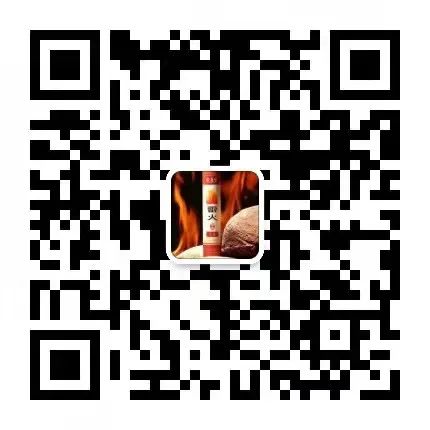 Follow to subscribe for more knowledge on moxibustion health preservation
Follow to subscribe for more knowledge on moxibustion health preservation
